Climbing plants for walls and fences
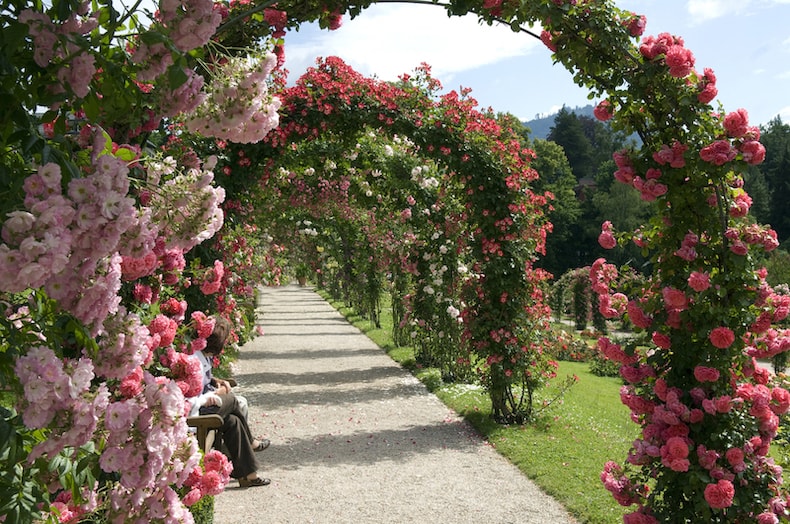
This path of rose-covered arches is the ultimate in floral showmanship
Image: Manfred Ruckszio/Shutterstock
Climbing plants give fences, walls, trellis, arches or obelisks the “wow” factor. Great for screening unsightly areas of the garden, they also brighten up bare walls and add height to your borders. Here’s our guide to the best climbing plants and wall-trained shrubs for sunny and shady spots in your garden.
Climbing plants for containers
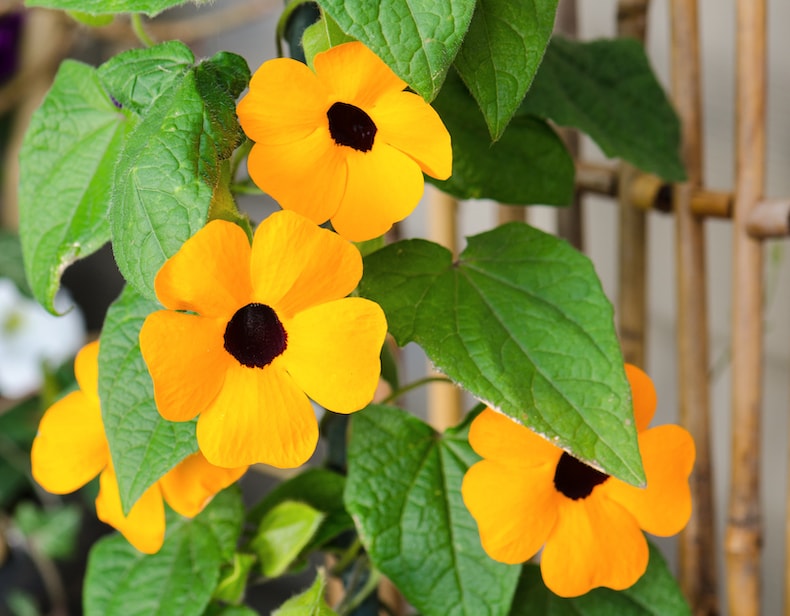
Flowers like the 'Black-eyed Susan' look fantastic on trellis’
Image: Thunbergia alata 'Superstar Orange' from Thompson & Morgan
Ideal for adding interest to patios and decking, climbing plants do well in containers. Good annual climbers to consider include Sweet peas, Black-eyed Susan, Morning Glory and Nasturtiums.
Perennials also make excellent choices for planting in containers, though you do need think about how you’re going to train them because they can get quite big as they mature. Give long flowering indigo violet Asarina scandens 'Jewel Mixed' a try, or Clematis montana 'Rubens' whose pale pink blooms will get your garden display off to a spectacular early summer start.
Climbing plants for shady walls
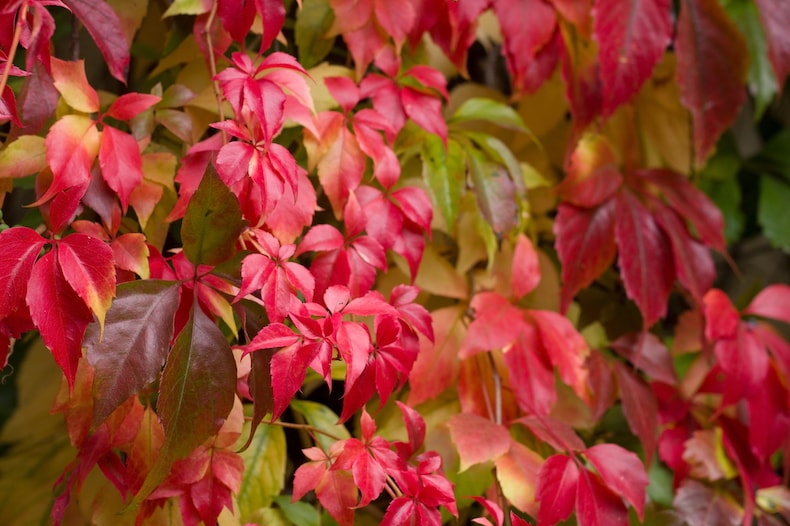
Virginia Creeper adds a shot of glorious autumn colour to shady walls
Image: Parthenocissus quinquefolia from Thompson & Morgan
Cold and sunless north-facing walls might seem an unpromising environment for climbers to thrive, but some plants cope with these conditions rather well. Likewise, east-facing walls which only get light in the morning tend to be a chilly spot in the garden, but you’d be surprised how much just a little splash of early sun adds to the growing potential.
That said, both north and east-facing walls are better suited to foliage plants than bloomers. East walls in particular can be tricky places to grow flowering plants, because winter-frosted buds and leaves struck by the morning sun can defrost too quickly causing cell damage which makes them brown and wither.
Good foliage climbers include Parthenocissus quinquefolia, better known as Virginia creeper, a carefree plant that’s easy to grow anywhere including shady spots. The leaves turn a stunning crimson colour in autumn. Alternatively, Hedera helix 'Green Ripple' is a very attractive ivy which offers evergreen coverage for shady walls and fences.
Climbing plants for sunny walls
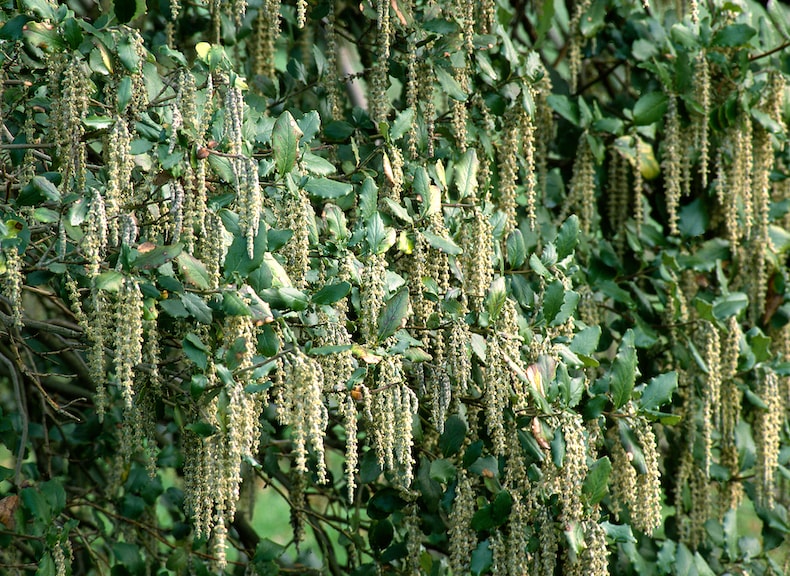
The elegant Silk-Tassel bush lends a touch of oriental beauty to this sunny wall
Image: Garrya elliptica from Thompson & Morgan
South and west-facing walls absorb the heat of the sun throughout much of the day and retain it overnight, making these ideal spots for less hardy plants like Ceanothus x delileanus 'Gloire de Versailles' (Californian Lilac), and the stunning violet passion flower, Passiflora 'Violacea Victoria'.
Winter-flowering climbing plants, and wall shrubs like silk-tassel bush (Garrya) and Wintersweet (Chimonanthus), will also benefit from warmth early in the year and will flower more freely against a south or west-facing wall.
Alternatively, why not try growing fruit trees against a sunny wall for a spectacular show of spring blossom and fresh home-grown produce straight from your garden? To save space, fruit trees can be trained as cordons, fans or espaliers.
In sunny spots where the soil is prone to drying in the heat, it’s vital to ensure you dig in plenty of organic matter like well-rotted manure or compost before planting. Mulching with organic matter or pebbles also helps to conserve moisture during the summer.
Supporting climbing plants
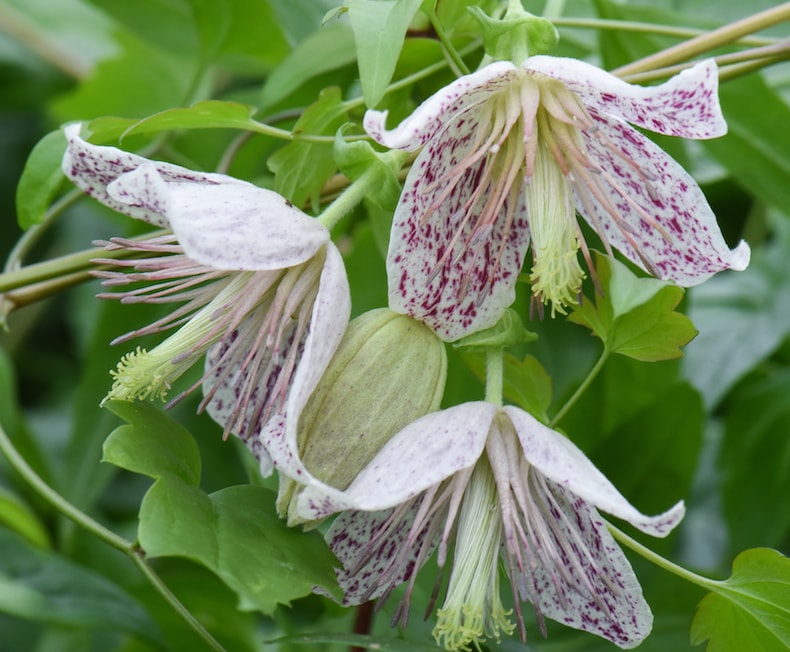
With the right support structure in place, flowers like 'Clematis' will thrive
Image: Clematis 'Advent Bells' from Thompson & Morgan
All climbing plants need some training to get them started. When planting your new climber or shrub, make sure you plant it 30-45cm away from the base of a wall or fence so the rain can reach the roots of the plant.
Climbers like ivy and Virginia creeper have aerial roots which help them cling to surfaces like walls and fences, but other climbers like honeysuckle and clematis need a framework to scramble over. Wall shrubs don’t climb naturally and need training and tying in to a support.
Use a series of horizontal or vertical wires, or a trellis attached to the wall to provide support for your climbing plants. Tie in new shoots with soft garden twine. Garden structures for climbing plants need to be strong and secure as plants can become very heavy with age.
We hope our list of climbing plants for walls and fences provides you with plenty of inspiration. Whatever surface you’re trying to cover, and whatever conditions you’re planting in, Thompson and Morgan has a climbing plant to suit every garden.
For more top climbing plant recommendations and expert growing guides, head to our hub page.
Quick guide:
How do you plant climbing plants?
Plant new climbers or shrubs 30-45cm away from the base of a wall or fence so rain can reach the roots. Climbers like ivy have aerial roots which help them cling to walls and fences, but other climbers like honeysuckle and clematis need a framework to scramble over.
What should I use to support climbing plants?
Use a series of horizontal and vertical wires, or trellis to support climbing plants. Tie in new shoots with soft garden twine. Garden structures like arches or pagodas need to be strong as climbing plants can become heavy with age.
Can you grow climbing plants in containers?
Climbing plants do well in containers but you'll need to water them regularly. Good annual climbers include Sweet peas, Black-eyed Susan, Morning Glory and Nasturtiums. Good perennial choices include the long flowering Asarina scandens 'Jewel Mixed', or Clematis montana 'Rubens'.

Written by: Sue Sanderson
Plants and gardens have always been a big part of my life. I can remember helping my Dad to prick out seedlings, even before I could see over the top of the potting bench. As an adult, I trained at Writtle College where I received my degree, BSc. (Hons) Horticulture. After working in a specialist plantsman's nursery, and later, as a consulting arboriculturalist, I joined Thompson & Morgan in 2008. Initially looking after the grounds and coordinating the plant trials, I now support the web team offering horticultural advice online.Sign Up For Exclusive Special Offers




© 2025 Thompson & Morgan. All rights reserved. A division of Branded Garden Products Limited.



